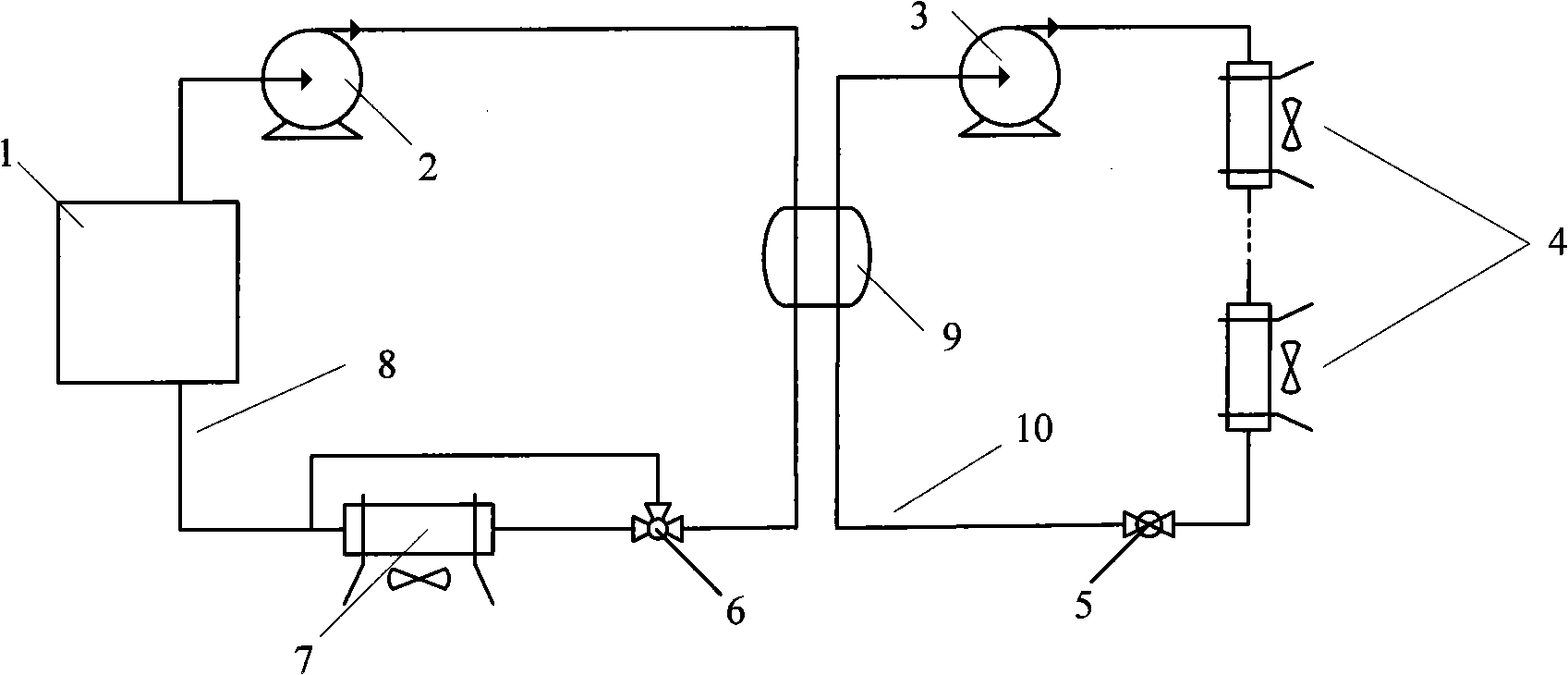Exhaust heat heating system of fuel cell vehicle
A fuel cell vehicle and heating system technology, applied in electric vehicles, electric traction, vehicle components, etc., can solve the problem of large power consumption
- Summary
- Abstract
- Description
- Claims
- Application Information
AI Technical Summary
Problems solved by technology
Method used
Image
Examples
Embodiment Construction
[0010] The specific embodiment of the present invention will be described with reference to the accompanying drawings.
[0011] The waste heat heat pump air conditioning system for fuel cell vehicles includes a fuel cell cooling circuit and a heating pipeline. The two circuits are connected through an intermediate heat exchanger to transfer the heat of the coolant in the cooling circuit to the heating pipeline.
[0012] A fuel cell radiator is installed on the cooling circuit, there is a bypass line between the inlet and outlet of the fuel cell radiator, and a tee is installed at the connection between the bypass line and the inlet or outlet of the fuel cell radiator valve; a shut-off valve is installed on the heating pipeline; the hot side of the intermediate heat exchanger is connected to the cooling pipeline, and the cold side is connected to the heating pipeline.
[0013] Such as figure 1 As shown, fuel cell engine 1, cooling circuit water pump 2, heating circuit water pu...
PUM
 Login to View More
Login to View More Abstract
Description
Claims
Application Information
 Login to View More
Login to View More - R&D
- Intellectual Property
- Life Sciences
- Materials
- Tech Scout
- Unparalleled Data Quality
- Higher Quality Content
- 60% Fewer Hallucinations
Browse by: Latest US Patents, China's latest patents, Technical Efficacy Thesaurus, Application Domain, Technology Topic, Popular Technical Reports.
© 2025 PatSnap. All rights reserved.Legal|Privacy policy|Modern Slavery Act Transparency Statement|Sitemap|About US| Contact US: help@patsnap.com

